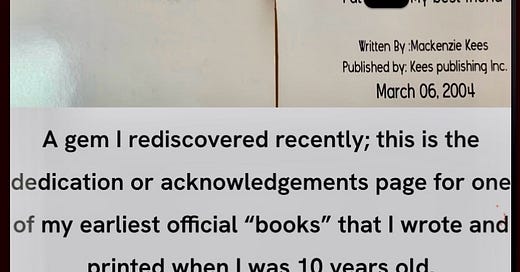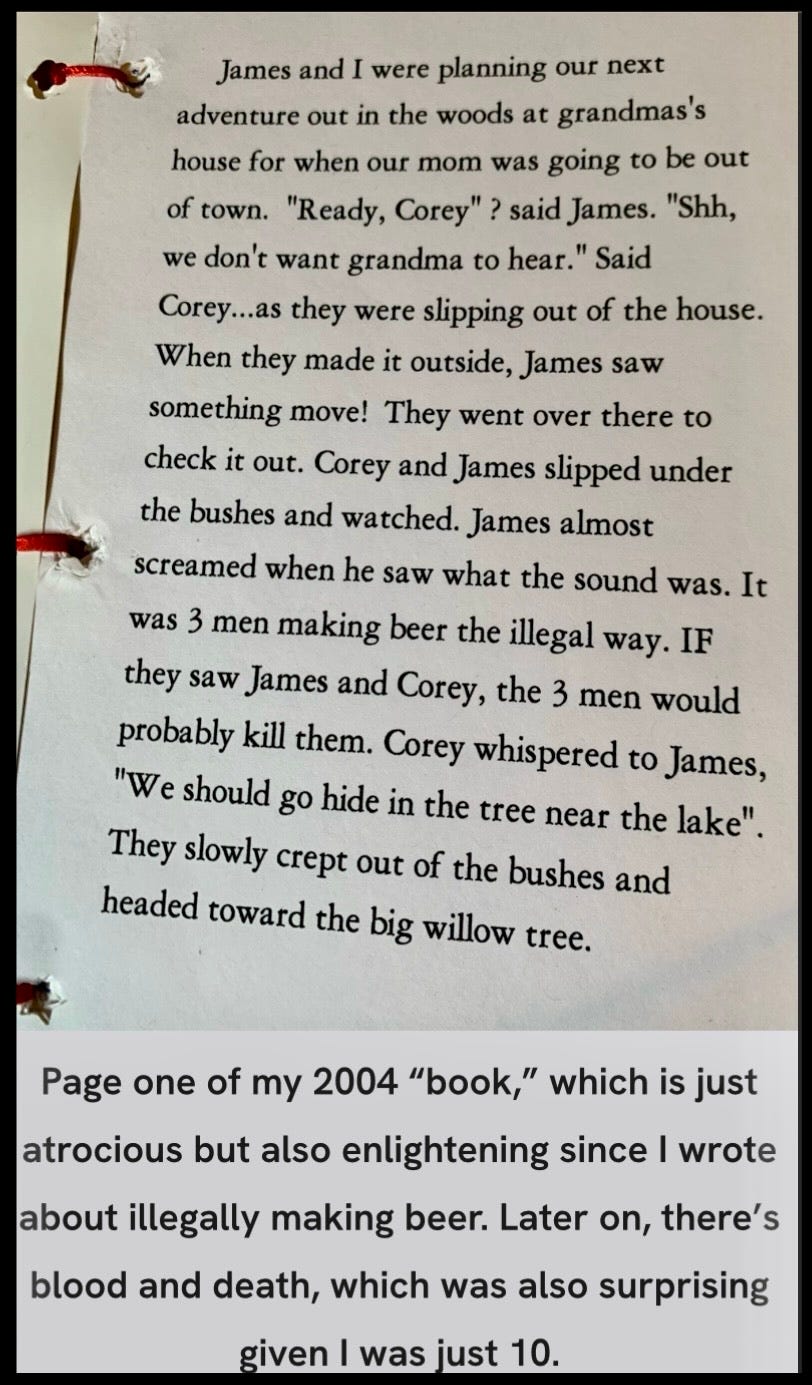Mary’s Magic Mojo: The Art of Memoir
If I’m feeling blue, I can crack open any Mary Karr book and bury my face in the fresh, woody scent of ink and paper, instantly feeling better, as though I’ve just inhaled a bit of her magic.
Mary Karr, Mary Karr, MaryKarrMaryKarr—yes, yes, I might’ve mentioned her name once or twelve hundred times before.
I bandy about my undying love for this author incessantly, even writing a blog post ostensibly about this very book, but beyond gushing over a few shining quotes from The Art of Memoir (tAoM), I don’t go into much detail about why Mary Karr means so much to me. (Shout out to my intrepid penpal for reminding me that, while readers can read my prose, they can’t read my mind!) Before I move out of the realm of book reviews[1] and leap back into my regular scheduled programming, I want to remedy that mistake and address the wonderful Mary Karr.
I always keep a stack of resource books nearby. To my left are self-help books on grief, alcoholism, toxic people, and, of course, all of Mary Karr’s memoirs along with her writing bible, The Art of Memoir. To the right, perched above my hand-me-down printer, are books I’ve yet to read, dictionaries, thesauruses, and handmade journals for notes. A tiny space remains for my pencil pouch—and a narrow path for my flamepoint kitty to reach his throne atop the dresser. Beneath my printer (where my feet should be but aren’t—since I sit like an eight-year-old, legs crossed Indian-style), I’ve stashed my fantasy writing resources. But today, the books to my left are my lifeline, especially tAoM.
In The Art of Memoir, Mary Karr explains that finding your voice is inseparable from discovering who you are.
Voice isn’t an afterthought; it conjures the writer’s true self into existence in the narrative. It becomes a tool for self-exploration, reflection, and ultimately, connection with the reader. In memoir, voice is both the bridge to your past self and a representation of who you are in the present moment. It’s not just your manner of speaking, but your mindset and way of perceiving the world. That’s why self-awareness is so vital to the process of uncovering it (p. 36-37). According to Karr, under-35s are like wet cement—squishy and impressionable—so it’s wise to let things firm up before diving headlong into memoir writing (p. 28). Naturally, I ignored this advice and plowed onward, being young(-ish) and impudent.
I heard about Mary Karr sometime as a teen, when my mom first tried introducing me to her work. I had little interest in reading The Liars’ Club back then. Stories about real life didn’t excite me. Reading was my way to escape reality. I couldn’t very well do that by immersing myself in another’s pain, especially when Karr’s life was so reminiscent of my own. So, I shelved it.
Years later, when I finally got around to reading The Liars’ Club, I saw my heartache in print for the first time; only, it wasn’t mine. These were the experiences of a 1960s family living in Texas. Karr’s familial hurts merely echoed mine own, and O boy was that powerful. I realized I could likewise use creative writing to explore my past, something I’d first contemplated doing after Dad’s death in 2021. While Dad was still alive, it was too painful to consider my trivial childhood woes. I also lacked a solid mirror, as I kept smashing mine with each new attempt at glancing backward.
If I’m feeling blue, I can crack open any Mary Karr book and bury my face in the fresh, woody scent of ink and paper, instantly feeling better, as though I’ve just inhaled a bit of her magic.
The edition I read featured a 2004 introduction by Mary Karr, wherein she addresses the enormous reception to her debut memoir. People still come up to her after her lectures to share their own stories of family dysfunction. To think, Karr was so nervous the first time she spoke about her book, worrying that people would ridicule her family. She talks about the anxiety she felt putting them in the spotlight, but that it ended up being a healing experience for them all. These insights, her radical honesty, unlocked the gate to my past, which for so long had been rusted shut within me. Not only could I start to heal myself, but maybe I could help others who went through similar situations as me. I felt invigorated, reborn.
While Mary Karr’s books made me feel seen, showing me what great writing looks like and comforting me with the knowledge I wasn’t alone in dealing with an alcoholic parent, it was The Art of Memoir that had the most impact on me. Her manual on memoir writing doesn’t waste trees on jargon. It thoroughly discusses the merits of truth-telling, covering things like how to choose the right detail, physicality in writing, and the importance of self-awareness. Karr doesn’t just help you with the technicalities of writing a memoir; she actually expounds on different ways you can think about your past. For that reason, I’d recommend this book to anyone who’s willing to take a hard look in the mirror, even if they never plan on penning what they discover looking back at them.
The Art of Memoir gave me the tools I needed to excavate my past.
Looking deep into your past is like untangling a knot that’s been buried in your chest cavity for years—frustrating, time-consuming, but oddly satisfying when you finally loosen it. You’ve got to stick with it long enough for the tension to ease. According to Karr, this kind of self-examination usually leads to a sense of peace. (Gods, I hope so.) For those of us haunted by the past, the only way to really let go is to face it head-on. Only then does it finally loosen its grip (p. 12). I find this passage especially comforting whenever I feel discouraged in my memoir journey, though Karr likens it to lancing a boil, which might be the more apt analogy.
“No matter how self-aware you are, memoir wrenches at your insides precisely because it makes you battle with your very self—your neat analyses and tidy excuses…Your small pieties and impenetrable, mostly unconscious poses invariably trip you up.”
—Mary Karr, tAoM
In the preface, Karr tries to deter the faint of heart. She warns her readers that it’s a tad masochistic, diving headfirst into the past as if it’s a casual dip in the backyard pool—when in truth, it’s more like a clumsy wade through quicksand. Imagine a family dinner where everyone’s memory bounces around the table like a bad game of telephone. I might fight tooth and nail for my version of the event, but later that night while staring at the ceiling, I’ll be left thinking, Wait, was I even there? Doubt, worry, endless rethinking—that’s the fuel that keeps our engines running. But truth is not the enemy; it’s the rickety handrail we reach for while bumbling down the staircase of our memories. And somehow, we cling to the hope that sorting through all this mess will finally set us free from it (p. xviii).
Karr spends a chunk of the preface discussing her early influences, highlighting one person who inspired her so much that she jokes she owes him a tattoo. I mention this because it underscores how influential a single person or book can be, and how that person, for me, is Mary Karr.
“Early on, I was lied to—often and with conviction—kicked off by two phrases: ‘I’m not drunk’ (most always a lie) and ‘Oh, don’t worry; everything’s fine,’ which was true just often enough to mess with my head.”
—Mary Karr, tAoM
Karr admits that unraveling her past nearly drove her mad—me too, girl, me too. Raised to distrust her own perceptions, she embraced Freud’s idea that the truth could set her free and embarked on a lifelong quest to untangle the chaos of her childhood. In the end, unearthing that truth brought radical healing to her fractured family (pp. 21-22).
You don’t need to be a memoirist to find value within these pages. So much of The Art of Memoir seemed to speak directly to me. If you’re also an Adult Child of an Alcoholic (ACoA), this could be a helpful resource for the day you’re ready to unpack your painful family history.
Until then, you can always read one of Mary Karr’s memoirs: The Liars’ Club, Cherry, or Lit. Her early childhood is covered in the first; the second is mostly about her preteen and high school years; the third is about her adulthood, motherhood, finding her faith, and her struggles with alcohol. She also writes beautiful poetry. My favorite book of poems is called Abacus. I’d go into some of the specific writing advice she gives in tAoM, but that’s what the book is for; any writers who are interested in my favorite tips, please reach out.
She’s currently hard at work on her latest memoir about her “late (estranged) loved-me-no-hated-me sister,” Lecia, which she posts updates about on her official Facebook account.
[1] As constantly consuming new books is a (good) writer’s bread and butter, I make no promises to not come back with yet another book review in the distant future. I do have an entire category dedicated just to book reviews, after all!






